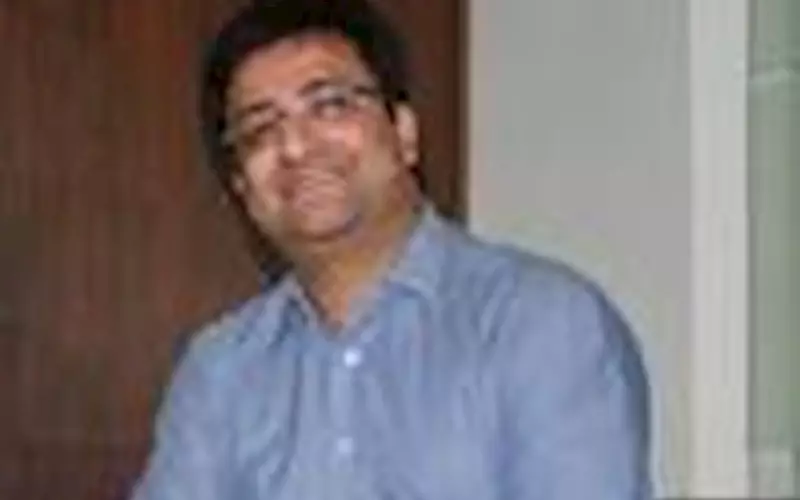“Good need not be expensive,” says Amit Ahuja, managing director, Multitec
In a straight-talk with PrintWeek India, Amit Ahuja, managing director of Multitec, says by bringing in new changes to the Ecoflex VSi press, he wants to break the myth that everything that foreign and expensive is good.
24 Sep 2013 | By Noel D'Cunha
PrintWeek India (PWI): How many Labelexpos has your company participated in? What are you showcasing at the show? Launches? Highlight of the stand?
Amit Ahuja(AA): This Labelexpo will be our fifth Labelexpo, and the second in Brussels). We are showcasing the Ecoflex VSi press. The VSi is a servo infeed, open access, short path press suitable for flexible packaging and labels. We are showing live demos every hour - on the hour.
PrintWeek India (PWI): Why is it important for you to exhibit at Labelexpo Europe 2013? What are your expectations from the show?
Amit Ahuja(AA): The show is important because it is the world’s largest show for label-related products. If you are not here, you are nowhere. We are not only on the look-out for partners, where we expect to appoint at least three to four agents, but also close at least two orders, which are in advanced stages of negotiations.
PrintWeek India (PWI): From an Indian perspective, what should the Indian label manufacturer look forward to at your stand?
Amit Ahuja(AA): What we offer is "value for money". I totally agree that our machines are not used to produce top 2-3% of the jobs, but the rest 97% can very easily be done on our press. With local support and a very attractive price point (considering the rupee devaluation and otherwise too), we give the Indian printer almost 90% of what foreign presses offer at 50% lower prices. They can look forward to world class specifications, a modern design, very quick job change and repeatable consistent quality. We will be also showing a new delam realm system (a web control system) and other movable accessories.
PrintWeek India (PWI): What are the factors driving growth of label industry in India? What are the threats?
Amit Ahuja(AA): FMCG growth, retail growth, specially packaged food and increase in packaging of items which were considered unorganised sector are now shifting to become more organised, aiding the growth of the label industry. The threat is that there is no real basis of costing done for the print jobs. This is a mistake which can have spiraling effects on the industry.
PrintWeek India (PWI): There is great deal of on-going research and development in the label manufacturing sector, so how should a prospective buyer zero-in on a certain technology? What technologies will play a major role in the near future?
Amit Ahuja(AA): To zero in on a technology is not the right approach. Most of the times it is more hyped than the reality due to obvious sales jargon.
A prospective buyer should never look at things from the technical standpoint first. He should look at the commercials first. What is going to be his USP? What is his niche market? What clients can he cater to? Any special service that he can provide which his competitors cannot? And finally, which technology will help him achieve these goals? By answering these questions, he will himself reach the logical choice of the technology that is right for him. In the future, I think people will opt for "not-so-complex-presses" - the ones without 20-30 servo motors. They want workhorses, not Rolls-Royces, because the latter is a about making a statement and not about making money - the first rule of business.
PrintWeek India (PWI): Label converters strive to reduce production operation costs while continuing to bring innovation and value to their customers. Discussions with label converters show a common need for production flexibility. Do you have machines or products that address these concerns of an average label converter?
Amit Ahuja(AA): Flexibility has to be built into one's systems of manufacturing. Not just in machines. Why can't the die-operator work on the press and vice-versa? This, and many more examples like this can bring cost-effectiveness to the process. At McDonalds, the systems have been streamlined so that every employee can do every function – from making burgers to taking inventory to handling the cash registers. Same is the case with the pizza chains. But still, they don't have highly qualified MBAs running the franchises, they have normal graduates.
The systems work. Similarly, a press that has everything interchangeable - from flexo to gravure to screen, will have half the features unused 80% of the time – in my opinion a waste of expensive resources. So why not have two-three smaller separate presses (each with its own speciality) at the same cost of the huge elephant? Having said this, multi-substrate capabilities are justified and label convertors should look at presses with this capability too.
PrintWeek India (PWI): Label converters strive to reduce production operation costs while continuing to bring innovation and value to their customers. Discussions with label converters show a common need for production flexibility. Do you have machines or products that address these concerns of an average label converter?
Amit Ahuja(AA): Yes, we have and as I said, we expect to close two orders from European companies. I have this to say to people travelling to the show with investment intentions – good need not be expensive. It had became a fashion in the label industry that everything foreign and expensive was good, but thanks to companies like us, we are breaking this myth. Customers with our presses do as good a work as with more expensive foreign brands. We don't have the top level of automation yet, but do you really need it? One must climb the technological ladder but it must be done with the bottom-line in mind. Of course, we will work closely with our customers to make our presses as user-friendly and as sophisticated as the real need is.











 See All
See All